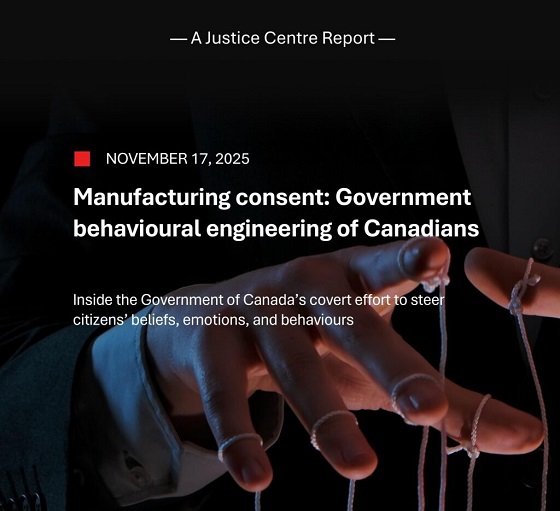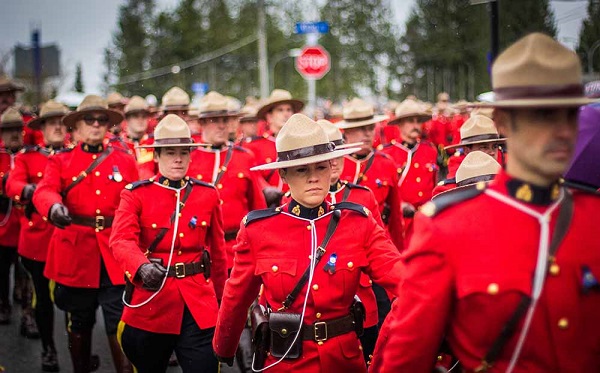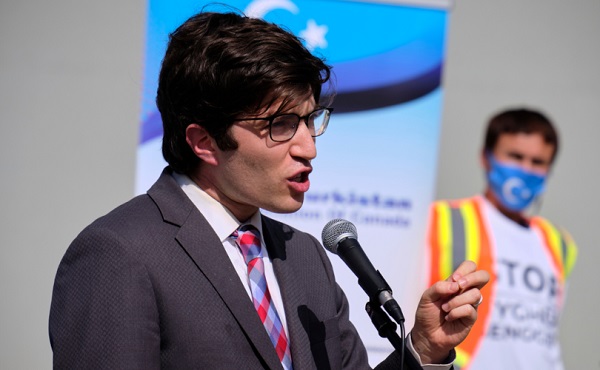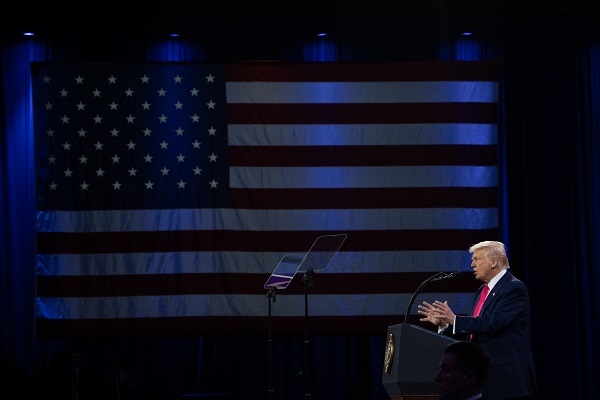Fraser Institute
Declining stature of foreign affairs minister underscores Canada’s waning influence on world stage

From the Fraser Institute
In the cabinet he unveiled in May, Prime Minister Mark Carney appointed Anita Anand to serve as this year’s foreign affairs minister.
Yes, that’s tongue in cheek. Anand may well serve longer than one year in that role. Her predecessor, Mélanie Joly, served three-and-a-half years, almost as long as John Baird who served from May 2011 to February 2015. But those two were exceptions to what has become a revolving door ministry. In this century, 15 people have served as minister of foreign affairs.
Some of this has to do with the six minority governments we’ve had in Ottawa over that time. But the bigger reason is that Global Affairs Canada, as it is currently known, no longer has the stature it once enjoyed, in part because foreign policy is directed more and more from the Prime Minister’s Office, and because “Canada’s standing in the world has slipped,” as Marc Garneau, who was foreign minister for nine months in 2021, wrote in his memoir. “We are losing credibility.”
The minister of foreign affairs was once seen almost as a Canadian equivalent of an American vice-president. Louis St. Laurent, Lester Pearson and Jean Chretien all served at foreign affairs before later becoming prime minister. Joe Clark served as foreign affairs minister after having been prime minister.
And Canadian foreign policy once mattered in world affairs. Pearson played a key role in the negotiations that led to the creation of the North Atlantic Treaty Organization (NATO) in 1949. He was the only Canadian to win the Nobel Prize for Peace, after he helped broker a ceasefire during the 1956 Suez Crisis that led to the first peacekeeping mission.
During her brief tenure as foreign affairs minister in 1979, Flora MacDonald promoted the idea of bringing Vietnamese refugees to Canada through private sponsorships by citizens and groups. The United Nations awarded Canada the Nansen Refugee Award for accepting more than 60,000 boat people, as they were known, from Indochina.
Joe Clark, as External Affairs minister in the 1980s, put Canada in the forefront of opposition to the apartheid regime in South Africa.
At the turn of this century, foreign minister Lloyd Axworthy led the movement that brought about the United Nations doctrine of Responsibility to Protect—a global commitment to prevent genocide and other atrocities.
And following the attacks on 9/11, Foreign affairs minister John Manley worked closely with Homeland Security Director Tom Ridge to secure the Canada-U.S. border, while continuing to promote free trade across it.
Since then, the stature of foreign affairs ministers has declined. Bill Graham was deeply disappointed when Paul Martin replaced him as minister with Pierre Pettigrew, whom Martin kept on a very short leash.
Stephen Harper cycled through a plethora of foreign affairs ministers—Peter MacKay, Maxime Bernier, David Emerson, Lawrence Cannon, Baird and, in the final months, Rob Nicholson.
Justin Trudeau did the same, replacing Stéphane Dion with Chrystia Freeland, then François-Philippe Champagne, then Garneau and finally Joly.
Part of this is the way of the world. In foreign affairs ministries everywhere, from Foggy Bottom to Whitehall to the Quai d’Orsay, diplomats lament that the office of the head of government effectively runs foreign affairs, shunting them aside.
But the declining stature of the Canada’s minister of foreign affairs coincides with the declining stature of Canada within the Western alliance and beyond, which itself is the result of the decline in Canda’s defence capability.
In the 1950s, during the Korean War, Canada’s defence spending reached 7.4 per cent of GDP. On John Diefenbaker’s watch it sat above 4 per cent; on Pearson’s, around 3 per cent.
Pierre Trudeau reduced the size and role of Canada’s military, while seeking to make Canada less closely aligned with the United States. He took defence spending down to 2 per cent of GDP, where Brian Mulroney kept it.
With the end of the Cold War, and with the need to balance the federal budget, defence spending under Jean Chretien and Paul Martin fell to about 1 per cent of GDP, where it largely remained under Stephen Harper and Justin Trudeau.
Other members of NATO are investing heavily in their military in the wake of Russia’s invasion of Ukraine. But Canada continues to lag behind.
Prime Minister Carney promises to increase Canada’s defence commitments while pursuing a more robust foreign and trade policy. We shall see. In any case, Anand should not get too comfortable in her office at the Pearson building. If past is precedent, she may not be there long.
Energy
Expanding Canadian energy production could help lower global emissions

From the Fraser Institute
By Annika Segelhorst and Elmira Aliakbari
Canada’s most timely opportunity to lower overall global emissions is through expanded exports to regions that rely on higher-emitting fuel sources.
The COP30 climate conference in Brazil is winding down, after more than a week of discussions about environmental policy and climate change. Domestic oil and natural gas production is frequently seen as a fundamental obstacle to Canada’s climate goals. Yet the data shows that Canadian energy production is already among the world’s cleanest, generating lower greenhouse gas (GHG) emissions per barrel-of-oil-equivalent produced, among major producing countries. Expanding the role of Canadian oil and gas in global markets can replace higher GHG-emitting alternatives around the world, driving down global GHG emissions.
Prime Minister Carney’s first budget highlights Canada’s “emissions advantage” in a chart on page 105 that compares the amount of GHG emissions released from producing oil and natural gas across 20 major producing countries. Compared to many other top-producing countries, Canada releases fewer GHG emissions per barrel of oil and gas produced when considering all phases of production (extraction, processing, transport, venting and flaring).
For oil production, Canada has an advantage over most major producers such as Venezuela, Libya, Iran, Algeria, Nigeria, China, Russia and Qatar. Canada’s emissions per barrel of oil produced are below the global average, making Canada among the lower emitting producers worldwide.
Similarly, Canada’s natural gas production has an emissions per barrel equivalent that is lower than the global average and is below major producers such as Turkmenistan, Uzbekistan, Nigeria, Indonesia, China, Argentina, Malaysia, Australia, Algeria, Iran, Russia, India and the United States. The chart below reveals countrywide average GHG emissions per barrel of oil or natural gas produced in 2022.
Source: International Energy Agency (2023), The Oil and Gas Industry in Net Zero Transitions 2023, IEA, Paris, p. 69
Canada’s emissions advantage stems from years of technological innovations that require less energy to produce each barrel of oil along with improvements in detecting leaks. From 1990 to 2023, Canada’s total production of crude oil rose by 199 per cent, while emissions per barrel of oil produced declined by 8 per cent, according to Environment and Climate Change Canada (ECCC). In the oilsands, since 1990 emissions per barrel have fallen by nearly 40 per cent while emissions from natural gas production and processing have decreased by 23 per cent.
Canada has already implemented many of the most practical and straightforward methods for reducing carbon emissions during oil and gas production, like mitigation of methane emissions. These low-hanging fruits, the easiest and most cost-effective ways to reduce emissions, have already been implemented. The remaining strategies to reduce GHG emissions for Canadian oil and gas production will be increasingly expensive and will take longer to implement. One such approach is carbon capture, utilization, and storage (CCUS), a technology which traps and stores carbon dioxide to prevent it from reaching the atmosphere. Major infrastructure projects like this offer potential but will be difficult, costly and resource intensive to implement.
Rather than focusing on increasingly expensive emission reductions at home, Canada’s most timely opportunity to lower overall global emissions is through expanded exports to regions that rely on higher-emitting fuel sources. Under a scenario of expanded Canadian production, countries that presently rely on oil and gas from higher-emitting producers can instead source energy from Canada, resulting in a net reduction in global emissions. Conversely, if Canada were to stagnate or even retreat from the world market for oil and gas, higher-emitting producers would increase exports to accommodate the gap, leading to higher overall emissions.
As Canada’s climate and energy policy continues to evolve, our attention should focus on global impact rather than solely on domestic emissions reductions. The highest environmental impact will come from enabling global consumption to shift towards lower-emitting Canadian sources.
Business
Canada is failing dismally at our climate goals. We’re also ruining our economy.

From the Fraser Institute
By Annika Segelhorst and Elmira Aliakbari
Short-term climate pledges simply chase deadlines, not results
The annual meeting of the United Nations Conference of the Parties, or COP, which is dedicated to implementing international action on climate change, is now underway in Brazil. Like other signatories to the Paris Agreement, Canada is required to provide a progress update on our pledge to reduce greenhouse gas (GHG) emissions by 40 to 45 per cent below 2005 levels by 2030. After decades of massive government spending and heavy-handed regulations aimed at decarbonizing our economy, we’re far from achieving that goal. It’s time for Canada to move past arbitrary short-term goals and deadlines, and instead focus on more effective ways to support climate objectives.
Since signing the Paris Agreement in 2015, the federal government has introduced dozens of measures intended to reduce Canada’s carbon emissions, including more than $150 billion in “green economy” spending, the national carbon tax, the arbitrary cap on emissions imposed exclusively on the oil and gas sector, stronger energy efficiency requirements for buildings and automobiles, electric vehicle mandates, and stricter methane regulations for the oil and gas industry.
Recent estimates show that achieving the federal government’s target will impose significant costs on Canadians, including 164,000 job losses and a reduction in economic output of 6.2 per cent by 2030 (compared to a scenario where we don’t have these measures in place). For Canadian workers, this means losing $6,700 (each, on average) annually by 2030.
Yet even with all these costly measures, Canada will only achieve 57 per cent of its goal for emissions reductions. Several studies have already confirmed that Canada, despite massive green spending and heavy-handed regulations to decarbonize the economy over the past decade, remains off track to meet its 2030 emission reduction target.
And even if Canada somehow met its costly and stringent emission reduction target, the impact on the Earth’s climate would be minimal. Canada accounts for less than 2 per cent of global emissions, and that share is projected to fall as developing countries consume increasing quantities of energy to support rising living standards. In 2025, according to the International Energy Agency (IEA), emerging and developing economies are driving 80 per cent of the growth in global energy demand. Further, IEA projects that fossil fuels will remain foundational to the global energy mix for decades, especially in developing economies. This means that even if Canada were to aggressively pursue short-term emission reductions and all the economic costs it would imposes on Canadians, the overall climate results would be negligible.
Rather than focusing on arbitrary deadline-contingent pledges to reduce Canadian emissions, we should shift our focus to think about how we can lower global GHG emissions. A recent study showed that doubling Canada’s production of liquefied natural gas and exporting to Asia to displace an equivalent amount of coal could lower global GHG emissions by about 1.7 per cent or about 630 million tonnes of GHG emissions. For reference, that’s the equivalent to nearly 90 per cent of Canada’s annual GHG emissions. This type of approach reflects Canada’s existing strength as an energy producer and would address the fastest-growing sources of emissions, namely developing countries.
As the 2030 deadline grows closer, even top climate advocates are starting to emphasize a more pragmatic approach to climate action. In a recent memo, Bill Gates warned that unfounded climate pessimism “is causing much of the climate community to focus too much on near-term emissions goals, and it’s diverting resources from the most effective things we should be doing to improve life in a warming world.” Even within the federal ministry of Environment and Climate Change, the tone is shifting. Despite the 2030 emissions goal having been a hallmark of Canadian climate policy in recent years, in a recent interview, Minister Julie Dabrusin declined to affirm that the 2030 targets remain feasible.
Instead of scrambling to satisfy short-term national emissions limits, governments in Canada should prioritize strategies that will reduce global emissions where they’re growing the fastest.

Elmira Aliakbari
-

 COVID-1913 hours ago
COVID-1913 hours agoNew report warns Ottawa’s ‘nudge’ unit erodes democracy and public trust
-

 Great Reset2 days ago
Great Reset2 days agoEXCLUSIVE: A Provincial RCMP Veterans’ Association IS TARGETING VETERANS with Euthanasia
-

 Health2 days ago
Health2 days agoDisabled Canadians petition Parliament to reverse MAiD for non-terminal conditions
-

 Daily Caller2 days ago
Daily Caller2 days agoSpreading Sedition? Media Defends Democrats Calling On Soldiers And Officers To Defy Chain Of Command
-

 Crime1 day ago
Crime1 day agoHow Global Organized Crime Took Root In Canada
-

 Digital ID2 days ago
Digital ID2 days agoLeslyn Lewis urges fellow MPs to oppose Liberal push for mandatory digital IDs
-

 Business2 days ago
Business2 days agoThe Payout Path For Indigenous Claims Is Now National Policy
-

 Energy1 day ago
Energy1 day agoExpanding Canadian energy production could help lower global emissions









